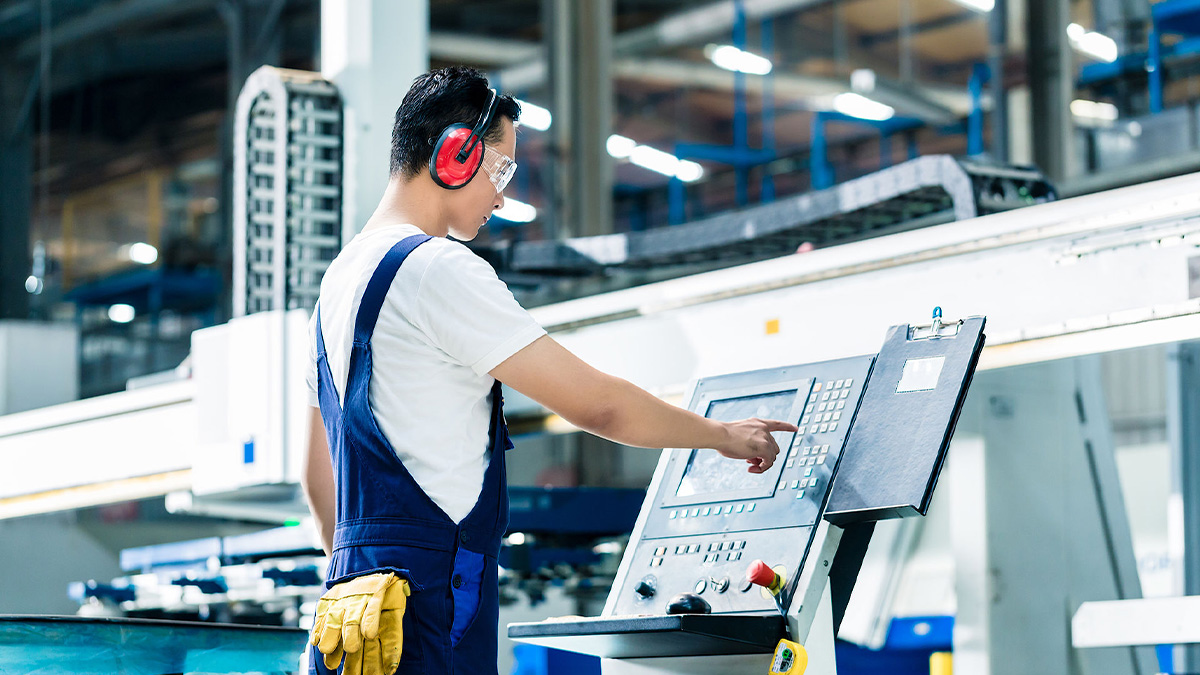In the manufacturing application of digital technology, CNC machining has been focusing on the improvement of the precision and accuracy of material processing, as well as the improvement of the operating process, so that most production processes can be completed on one machine, thereby improving overall production and efficiency, and reducing costs.
What is CNC Machining?
CNC stands for "Computer Numerical Control" and CNC machining is defined as a subtractive manufacturing process, usually using computer controls and machine tools, to produce custom-designed parts. CNC machining works on a variety of materials, including metal, plastic, wood, glass, foam, and composites, and is used in a wide variety of industries. Examples include large CNC machining of telecom parts and prototyping, and CNC machining of aerospace parts.
Programmable CNC machining instructions are capable of instructing the CNC machine to autonomously perform CNC machining operations.
CNC Machining Process:
CNC machining is a manufacturing process that utilizes computer controls to operate and manipulate machines and cutting tools to shape raw materials, such as metal, plastic, wood, foam, composites, etc., to produce custom parts.
CNC machining operations include mechanical, chemical, electrical, and thermal machining, whereby the necessary material is removed from the workpiece to produce a custom-designed part or product.
CNC machining process and operations include the following stages:
- Design CAD models
- Convert CAD files to CNC programs
- Equipped with CNC machine or CNC machining center
- Execute machining operation instructions
Different Types of CNC Machines and CNC Machining Operations:
-
CNC Drilling Machines:
The drilling process uses a multi-point drill to create a cylindrical hole in the workpiece. In CNC drilling, typically the CNC machine feeds the rotary drill perpendicular to the plane of the workpiece surface, resulting in vertically aligned holes with a diameter equal to the diameter of the drill used for the drilling operation. However, oblique drilling operations can also be performed by using specialized machine configurations and work holding devices. The operational capabilities of the drilling process include reaming, countersinking, and tapping.
-
CNC Milling Machines:
The milling process removes material from a workpiece by rotating a multi-point cutting tool. In CNC milling, the CNC machine usually feeds the workpiece into the tool in the same direction as the tool rotates, while in manual milling, the machine feeds the workpiece in the opposite direction to the tool rotation. The operational capabilities of the milling process include face milling, perimeter milling, and more.
-
CNC Turning Machines:
Turning is a single-point cutting tool that removes material from a rotating workpiece. In CNC turning, CNC lathes feed a cutting tool in a linear motion along the surface of a rotating workpiece, removing material on the circumference until the desired diameter is reached to produce cylindrical parts with external and internal features such as grooves, tapers, and thread. The operational capabilities of the turning process include boring, facing, grooving, and thread cutting. When it comes to CNC mills and lathes, milling and its rotary tools are better suited for more complex parts. However, lathes with rotating workpieces and stationary tools are best for making round parts faster and more accurately.
How does CNC Machining Work?
When the CNC system is started and the required cutting programming is entered into the software, the CNC will perform the specified cutting, milling, and other tasks.
What is CNC Machine Programming?
In CNC manufacturing, machines are operated through numerical control, in which a software program is specified to control objects. The language behind CNC machining, also known as G-code, is used to control various behaviors of the corresponding machine, such as speed, feed rate, and coordination.
Using a CNC machine, input the program through punch cards. The program of the CNC machine tool is input into the computer through the keyboard. CNC programming remains in the computer's memory. The code itself is written and edited by programmers. CNC systems provide a wider range of computing power but are also inevitably flawless, so CNC system design is not set in stone, and update prompts can be added to pre-existing programs by modifying the code.
Applications of CNC Machining:
CNC machining is a manufacturing process used in a variety of industries, including automotive, aerospace, construction, and agriculture.
CNC machining processes are suitable for a variety of engineering materials, including metals (such as aluminum, brass, stainless steel, alloy steel, etc.), plastics (such as PEEK, PTFE, nylon, etc.), wood, foam, composite materials, etc.
What is a CNC Product?
Computer Numerical Control (CNC) machining is a manufacturing process in which pre-programmed computer software dictates the movement of factory tools and machinery. The process can be used to control a range of complex machinery, from grinders and lathes to milling machines and CNC routers.
Types of CNC Machine Products:
The products manufactured by CNC include molds, electronic products, hardware, plastics, jewelry, handicrafts, hair accessories, furniture, locks, shoes, glasses, automobiles, mobile phone cases, buttons, middle frames, lenses, glass covers, toys, and other industries. It is suitable to produce mobile phone casings, screens, mobile power supply casings, eyeglass frames, plane reliefs, electronic components, fixtures, furniture panel TV casings, camera focusing hardware highlights, mobile phone buttons, mobile phone cameras, 3D complex hardware, hardware decorative parts, car frames, surgical instruments, aircraft engines, gears, hand tools, and garden tools, etc.
Advantages of CNC Machining and Products:
- The automated nature of CNC machining enables the production of high-accuracy, high-precision, simple parts, and cost-effectiveness when completing one-off and medium-volume production runs.
- High precision and high quality.
- Data is easy to store and modify. If the programming is good, the machine tool can be used at different times and places to produce the same product. No redesign is required.
- It can automatically change tools, feed materials, etc., with a higher degree of automation.
- Adaptive control maintains the machine tool in optimum production conditions.
- Longer tool life.
- Can perform calibration of complex product specifications and shape requirements
- Products can be mass-produced






.png)







